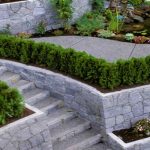A Rose by Any Other Name
The next installment in our series from Wendy.
***************************************************************************************
What is a suburb?
As I was thinking about this post, I started having a really hard time defining what a suburb is. I mean, we all know what it is, right? It’s a planned, homogenized community with plastic-looking houses and artificially green lawns sporting pink flamingoes and rusty swingsets.
But if my goal is to defend suburban life and explain why I think people who live in suburbs have as good a chance of surviving the apocalypse as the people in the country who have a bajillion acres of land and an abundance of natural resources at their disposal, or people in the city who can combine or eschew resources such as transportation and heating, I can’t very well use that definition ![]() .
.
I googled the term and found this definition: town or unincorporated developed area close to a city. Suburbs, since they are largely residential, are usually dependent on a city for employment and support services and are generally characterized by low-density development relative to the city.
I think that pretty well explains what a suburb is, but again, if suburban dwellers are “dependent” on the city for support services and employment, then any illusion of self-sufficiency is immediately negated, by definition.
In short, by using either definition, when it comes to the apocalypse, we suburbanites are screwed.
So, let’s focus on what suburbanites have that is unique to their particular habitat, and might, with a little imagination, be used to their advantage.
1. Suburban homes have a yard space, usually between 10,000 and 40,000 sq ft. Not a lot, but more sometimes just means “more”, which isn’t always better.
2. Suburbs are “close” to amenities. While “close” really is subjective, and some people would say that anything within a 50 mile radius qualifies, I (and most of my suburban neighbors) would classify close as within walking distance. It would take me two to three hours to walk to Portland. It would take about an hour to walk to downtown Biddeford (Portland and Biddeford are the largest and the fifth largest cities in the state of Maine, respectively).
3. Suburban homes are usually single-family homes. People who escape to the suburbs want to have some sense of privacy, but recognize that being interdependent might not be such a bad thing.
4. Suburbs do not, typically, have any businesses (except for the occasional “home business”, that usually doesn’t attract on-site clients).
In other words:
If you measure your property by square feet rather than acres, you might be a suburbanite.
If you need extra storage space to house your lawn care apparatus and outdoor furniture, you might be a suburbanite.
If you live close enough to school to walk, but far enough away for them to send the bus, you might be a surburbanite.
If the only bus that comes to your neighborhood is the school bus, you might be a suburbanite.
If you could walk to town for the gallon of milk you need, but choose to drive, because it’s more than a mile, and that’s just too far to walk with those little kids, BUT you don’t think twice about putting on your sneakers and dropping little Sally into the jogging stroller and walking around the neighborhood for some exercise, you might be a suburbanite.
If you drive more than two miles, but less than ten, to buy plastic crap from China, you might be a suburbanite.
If there is no “corner store” in your neighborhood, you might be a suburbanite.
If you’re close enough to see the dirt on your neighbors’ windows, but need binoculars to see what’s on their big screen television, you might be a surburbanite.
If there is anything called a cul-de-sac in your immediate neighborhood, you might be a surburbanite.
If you live in a cul-de-sac … you are a suburbanite.
Avoid the extremes and converge in the middle.
That’s the suburbs.
Suburbs are the happy medium between country life and city life.
Up Next: Mary, Mary Quite Contrary: The Suburban Lawn of the Future






